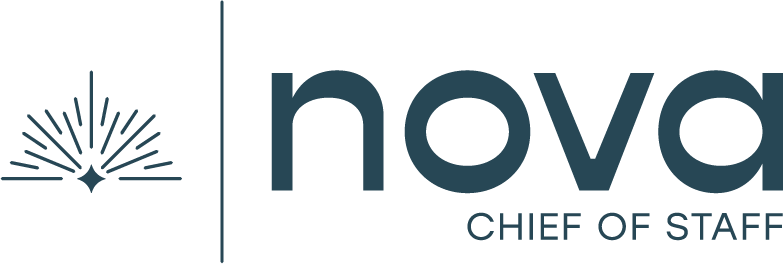Why is PowerPoint such a useful tool for a Chief of Staff?
In the Chief of Staff Certification course, we spend a decent amount of time getting comfortable with PowerPoint. In the following paragraphs, I've outlined why I love it as a resource and why - once you're comfortable with it - I find it incredibly valuable and efficient.
PowerPoint is one of my very favorite tools, and I use it for nearly everything. But with so many options out there for template creation, project management tracking, and efficiency software in general, you may wonder why I have spent so much time in PowerPoint.
As with most things for me, it comes down to efficiency. The capabilities of PowerPoint as a tracking tool and its readiness for impromptu sharing have significantly simplified my life as a Chief of Staff. And (as I share in the Chief of Staff Certification course) I take it one step further by consolidating nearly all my essential business resources into a single PowerPoint deck I call, “the Walking Deck.”
The Walking Deck serves as the go-to resource for both my team and me. Inside this deck, you’ll find our crucial materials: rhythm of business slides, travel schedules, calendars, upcoming and past agendas, future planning items, analysis and summaries on special projects, project management tracking, and much more.
Why? Three reasons:
Instant Executive Presentation: The role of Chief of Staff often demands the ability to present crucial information to executives at any moment. This is hands-down the biggest reason why PowerPoint is my top choice.
Visual Excellence and Tracking: My teams have explored several software options and none of them have made the cut when it comes to the visual export and professional look of PowerPoint, while still serving as a useful tool.
Flexibility: I can design a PowerPoint slide to serve the exact purpose I need across a wide range of scenarios. However, I cannot design other tools and exports from software platforms to be presentation-ready, consolidated in one place.
To illustrate my point, consider this example: Let’s say you are overseeing the planning of an upcoming offsite with multiple workstreams, executive stakeholders, presenters, and numerous moving parts. On a weekly basis, you’re tasked with creating an executive summary for your leader. In this scenario, it’s imperative that the materials you share are polished. But what if a leader involved in the project requests a mid-week summary, can you provide it immediately? Or do you need to spend valuable time exporting it from another tool and then formatting it prior to sharing?
There are some instances where alternative software programs are better suited for specific projects – for example, complex data manipulation and organization is best handled in Excel, and lengthy documents, such as briefs, are more suited for Word. Additionally, internal items for your eyes only do not warrant the creation of polished, presentation-ready slides.
However, once you get to the point where you realize that the project, tool, template, or resource you’re creating must be highly visible and readily shareable at any given moment, PowerPoint is the winner every time.
Note, this philosophy can easily be applied to Google Slides and other creation platforms like Canva. What’s most important is taking the needs of the business and creating a tool and corresponding system that works for your brain, addresses the business need, and drives efficiency.
